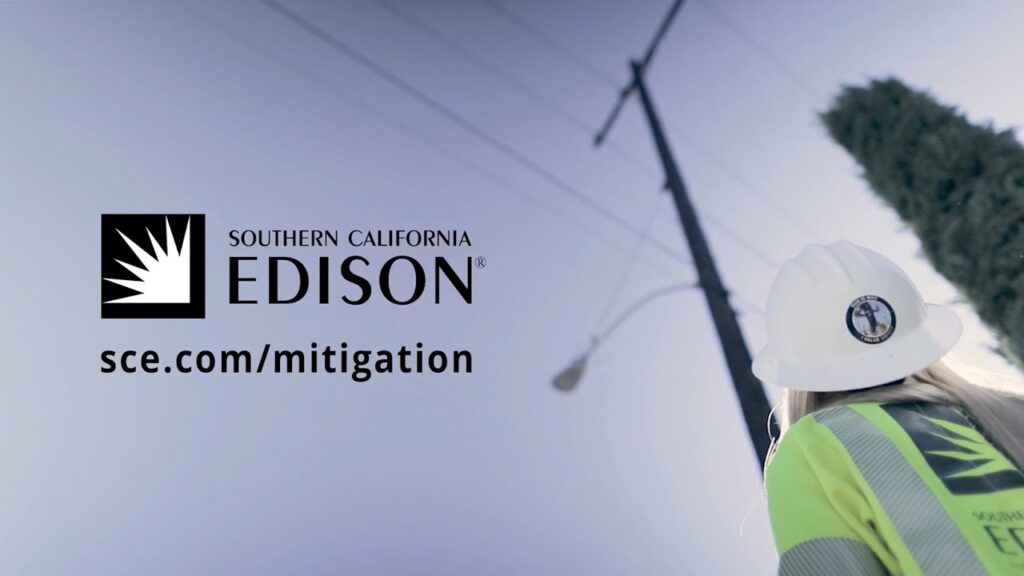The Importance of Regular Powerline Inspections
Powerline inspections are a critical component of maintaining the electrical grid infrastructure in Mexico. The vast and interconnected network of powerlines that span across the country are subject to a variety of environmental stresses ranging from harsh weather conditions to encroaching vegetation. Regular inspections carried out by helicopter are essential to ensuring the continuous provision of electricity, preventing outages, and safeguarding against potential hazards that could lead to larger issues within the power grid.
Helicopters offer a unique vantage point for powerline inspections, allowing for comprehensive monitoring that ground crews can’t achieve. They can cover large distances quickly, making them an efficient tool for scanning remote and hard-to-reach areas. Regular aerial inspections can detect issues such as damaged cables, broken insulators, and structural weaknesses in pylons. This early detection is vital for scheduling maintenance before minor damages escalate into major failures that can be costly and dangerous to repair.
One of the primary benefits of helicopter-powered inspections is the minimization of downtime for repairs. When powerline issues are identified from the air, ground crew interventions can be more targeted and efficient, reducing the amount of time a particular line must be de-energized for safety. This means less disruption to communities and businesses that rely on a stable power supply. It is essential for economic stability and community well-being that power services in Mexico are uninterrupted, and aerial inspections play a key role in this process.
Additionally, helicopters equipped with advanced monitoring technologies, such as infrared cameras and LIDAR, enhance the effectiveness of powerline inspections. These tools enable the detection of hotspots and other issues not visible to the naked eye, thus allowing for a proactive approach to maintenance. Not only does this ensure higher safety standards, but it also extends the lifespan of powerline components, which is a financially sound strategy for the long-term management of Mexico’s electrical grid.
Environmentally, regular helicopter inspections of powerlines align with Mexico’s commitment to preserving its natural habitats. By identifying and managing vegetation encroachment in a timely fashion, utilities can avoid larger-scale interventions that could be more disruptive to the environment. Regular aerial monitoring ensures that any necessary clearing is done with precision, significantly reducing the environmental footprint of such maintenance work. In summary, the strategic use of helicopters for powerline inspections positively impacts the efficiency of the electrical grid, safety, and environmental preservation.
Understanding Wildfire Risks in San Bernardino & Riverside Counties
The San Bernardino and Riverside Counties in California are known for their scenic landscapes, but they also face significant hazards due to wildfires. With a changing climate, the frequency and intensity of these fires have increased, prompting a need for greater understanding of the risks associated with wildfires in these regions. The dense chaparral, seasonal Santa Ana winds, and a growing population that encroaches on wildlands, all contribute to the potential for catastrophic fires.
In order to mitigate wildfire risks, local government and firefighting agencies have put forth a collaborative effort toward strategic fire prevention and response. This includes creating defensible space around properties, conducting controlled burns to manage vegetation, improving public awareness through education, and investing in advanced firefighting technologies. It is imperative for residents of San Bernardino and Riverside Counties to familiarize themselves with fire safety guidelines and to stay informed about local fire conditions and evacuation routes.
The role of the community in wildfire preparedness cannot be overstated. Engaging in proactive measures, such as maintaining a clear area free of flammable materials around homes, adhering to building codes that are fire-resistant, and participating in emergency preparedness drills, can dramatically reduce both the likelihood and the impact of wildfires. Moreover, understanding and respecting natural fire cycles and risk areas is essential for living safely in these beautiful, but fire-prone, parts of California.
Helicopter Aerial Surveillance for Enhanced Powerline Safety
Electricity is the lifeblood of modern cities and societies, and maintaining the infrastructure that delivers this vital resource is of utmost importance. In Mexico, with its varied terrain from rainforests to deserts, traditional powerline inspection methods are often fraught with challenges. Enter the use of helicopter aerial surveillance – a state-of-the-art approach that has revolutionized the way powerline safety is maintained. Utilizing helicopters enables a rapid and thorough examination of electrical lines, ensuring that any potential hazards are identified swiftly and reliably.
Accurate Issue Detection is one of the primary benefits of using helicopters for powerline surveillance. The bird’s-eye view provided by these aerial platforms allows for unparalleled perspective on the conditions of powerlines and surrounding vegetation. This aerial advantage is particularly beneficial when inspecting remote areas or when natural disasters, such as hurricanes or earthquakes, make ground access difficult or dangerous. Helicopters are outfitted with high-resolution cameras and other sensory equipment, making them exceptional at spotting issues such as wear and tear, structural damages, and encroaching foliage.
Reduced Inspection Times significantly enhance the efficiency of powerline maintenance operations. Traditional ground inspections are not only time-consuming but also limited in the area they can cover in a given period. Helicopters, on the other hand, cover vast stretches of powerlines in the same time span, thus expediting the surveillance process. Quick identification of issues means faster response times for repairs and maintenance, minimizing the risk of power outages and ensuring continuous power supply to businesses and residences.
Another aspect of helicopter surveillance is the Enhanced Safety for Inspection Personnel. The risk of accidents during ground inspections can be high, especially in difficult terrains or in the presence of high-voltage lines. By utilizing helicopters, the need for personnel to directly climb towers or come into close proximity with live wires is greatly reduced. This not only safeguards the workers but also increases the overall safety of the maintenance operations. Remote monitoring tools and technologies used during these flights further reduce human exposure to hazardous conditions.
Ultimately, the integration of helicopter surveillance into powerline maintenance routines has significant implications for Preventive Maintenance Strategies. By employing helicopters, utility companies can adopt a more proactive approach to infrastructure management. Regular and comprehensive surveillance flights can detect minor issues before they escalate into major problems, thereby preventing large-scale outages. This strategy is not only cost-effective in the long run but also ensures a more reliable power grid, contributing to the economic stability and public safety in Mexico.
Advanced Technologies in Helicopter Powerline Inspections
In the vast and varied terrain of Mexico, monitoring and maintaining the integrity of powerlines is a colossal task. Helicopters equipped with cutting-edge technologies have emerged as a reliable solution for powerline inspections. They offer unparalleled agility and access to hard-to-reach areas, ensuring a thorough and efficient assessment of electrical grids.
One of the revolutionary technologies deployed is LIDAR (Light Detection and Ranging). This remote sensing method uses light in the form of a pulsed laser to measure distances to the Earth. When mounted on helicopters, LIDAR systems can produce precise 3D maps of powerlines and the surrounding environment, highlighting potential hazards such as encroaching vegetation or structural anomalies.
Thermal imaging is another crucial technology utilized in aerial powerline inspections. Advanced thermal cameras mounted on helicopters detect heat signatures indicating potential electrical faults. By identifying hotspots on insulators, connectors, or other components, maintenance teams can address issues before they lead to power outages or dangerous line failures.
Additionally, high-resolution photography and video recording equipment are essential for documenting the physical condition of powerlines. These visual tools complement other sensory data, allowing for a comprehensive analysis of the power infrastructure. They provide maintenance crews with the detailed visual evidence necessary for planning repairs and ensuring compliance with safety regulations.
Collaborating with Local Authorities to Reduce Fire Hazards
Helicopter services in Mexico are instrumental in the prevention and mitigation of fire hazards, especially during the dry season when the risk of forest fires is exceptionally high. By collaborating with local authorities, helicopter companies can provide rapid response and effective aerial support to monitor fire-prone areas, helping to identify potential threats before they escalate into disasters. This preventative approach is vital in safeguarding not only the natural environment but also the communities that reside within these vulnerable regions.
The synergy between helicopter operators and local firefighting teams allows for a seamless integration of airborne capabilities with ground efforts. Helicopters, equipped with advanced technology such as thermal imaging cameras, play a critical role in detecting hotspots that might be invisible to the naked eye. Upon detection, these teams can coordinate to perform targeted water drops using specialized buckets or tanks, greatly enhancing the efficiency and precision of firefighting operations.
Training exercises conducted jointly with local authorities are essential to ensure that all teams are prepared for the fire season. These trainings cover a range of scenarios, from rapid water refill techniques to communication protocols during emergencies. Establishing these procedures allows for a cohesive response and ultimately, a more robust defense against the spread of wildfires. It also fosters trust and a spirit of collaboration between helicopter operators and local emergency services.
Beyond emergency response, helicopter services are involved in community education and prevention programs. By participating in awareness campaigns, helicopter companies can use their visibility to promote safe practices and fire prevention measures throughout Mexico. Distributing educational materials, hosting seminars, and showcasing equipment during public demonstrations are just some of the ways helicopter operators work hand in hand with authorities to protect the country’s rich and diverse landscapes from the threat of fire.
Case Studies: Successful Wildfire Prevention Efforts in Southern California
Integrating Advanced Helicopter Technology
In recent years, Southern California has seen a significant advancement in wildfire mitigation strategies, with the integration of cutting-edge helicopter technology playing a pivotal role. Modern helicopters equipped with high-capacity water tanks and precision drop systems have empowered firefighting teams to tackle blazes quickly and effectively. These aerial firefighters can access remote areas swiftly, often becoming the first line of defense against rapidly spreading wildfires. Their ability to continually refill and make multiple drops in succession drastically increases the efficiency of the firefighting process, preventing many fires from growing out of control.
Collaborative Wildfire Training Programs
Another critical factor in the success of wildfire prevention has been the establishment of collaborative training programs. Southern California has invested in specialized training for helicopter pilots and ground crews, focusing on scenarios that mimic the region’s unique landscape and fire behavior. The joint exercises, which sometimes include simulated night flying operations, ensure that all personnel involved are well-prepared for the challenges posed by wildfires. This readiness allows for a more coordinated and strategic response when real incidents occur, significantly reducing the chance of catastrophic damage.
Public Awareness and Intervention Campaigns
Public involvement is a cornerstone of effective wildfire prevention. Southern California has leveraged multiple platforms to educate the community on hazard reduction and early intervention strategies. Helicopter patrols are not only instrumental in early fire detection but also serve as a visual reminder of the constant vigilance required during fire season. Strategic messaging reinforces the importance of reporting signs of smoke or potential fire threats immediately, highlighting how proactive public participation can lead to successful wildfire mitigation. Continuous efforts to increase public awareness have proven indispensable in fostering a culture of responsibility and action.


